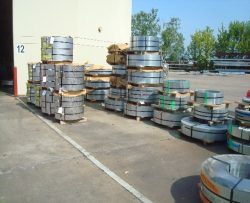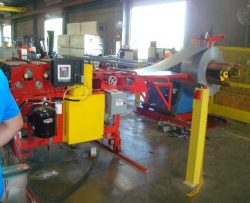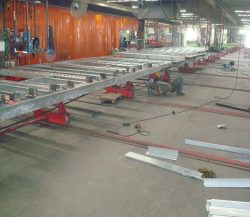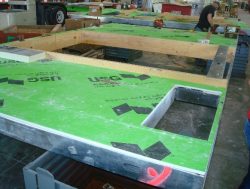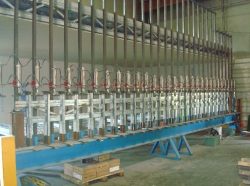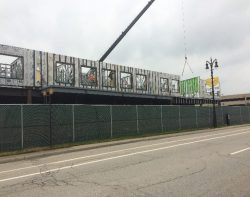Pre-fab: Piece by piece
By Michael Brehmer, Architect
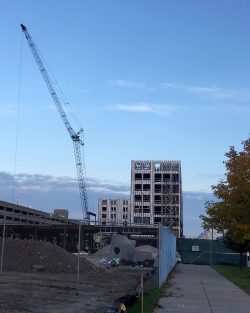 An exciting thing about visiting a construction site can be witnessing all of the action involved in a building taking shape. What at first may seem chaotic — the amount of people involved, the machinery, the noise, the discussions of coordinating information and documents — is satisfying to see actually happen (especially when as an architect much of one’s time can be spent literally sitting inside an office in front of a computer).
An exciting thing about visiting a construction site can be witnessing all of the action involved in a building taking shape. What at first may seem chaotic — the amount of people involved, the machinery, the noise, the discussions of coordinating information and documents — is satisfying to see actually happen (especially when as an architect much of one’s time can be spent literally sitting inside an office in front of a computer).
HAA has designed new student housing for Wayne State University, which is currently under construction by Gilbane Building Company. The work is proceeding quickly due to the buildings’ design for prefabricated construction — where the exterior walls are made offsite in a factory, and transported to the construction site by multiple truckloads each week. The factory allows for tightly controlled dimensional tolerances and improved repeatability, as the same wall is created multiple times.
Since Detroit is famously known as an automotive industry city, this way of making things is familiar. This process is similar to automotive production methods like the Toyota Production System, which American automotive manufacturers began implementing during the 1990’s to improve product quality and reduce production time. It’s often referred to as lean manufacturing, and involves concepts to reduce waste and continuously improve the product and the manufacturing process itself.
These ideas applied to building construction are not new. Sears, Roebuck & Co. supplied a kit-of-parts for thousands of new prefabricated pre-war era American houses, which could often be built in a single day; and similar projects were documented over a decade ago by Allison Arieff’s book Prefab. Recently, prefab architecture projects in New York City — B2 by SHoP Architects in Brooklyn’s Atlantic Yards, and THE STACK by Gluck+ — have also reminded us of how architects are designing for the efficiencies and economy of scale that a modular unit provides.
In cities like Detroit that are currently experiencing periods of housing shortages, prefabrication can be an effective method for delivering projects quickly, and more efficiently and economically than conventional construction.
